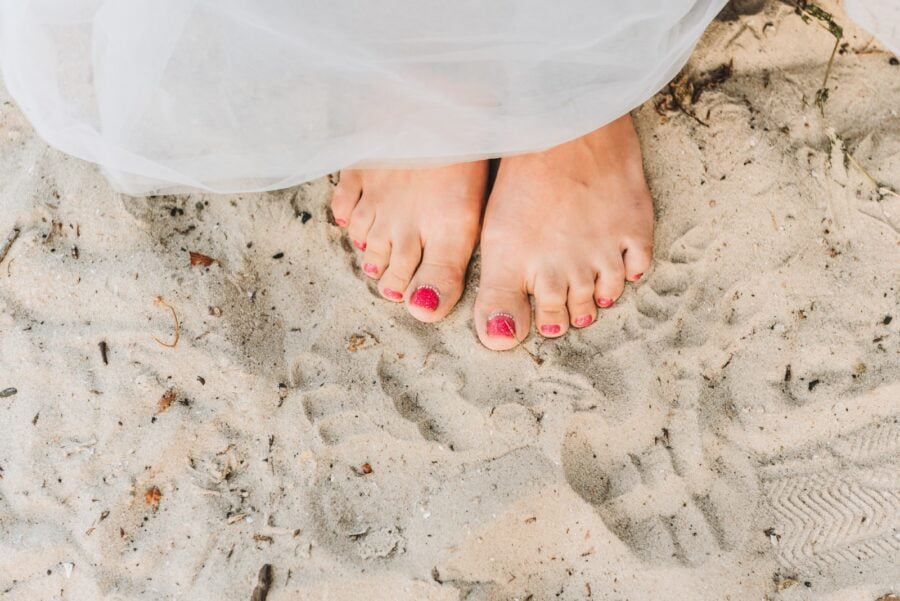Who would have thought this simple act could lead to more than you’d imagine
I’m going to start by being completely transparent about this. Taking my shoes and socks off is a big thing for me. But, it can be for a lot of people. For starters, my mother would always drum into my head that walking without shoes and socks would bring on all sorts of health problems: a sore stomach, catching a cold, and many other adverse health problems. It’s no wonder I always kept my shoes on at all times. Then I would see people in the throes of winter walking around without shoes on. Barefoot on concrete, grass and the dirt. If you want to experience this firsthand, come on over to Australia. Most of us wander around the streets and into businesses without shoes. It’s a way of life for Aussies. Nothing signifies being carefree as much as barefoot walking does. That may seem like a very disrespectful act to a lot of cultures. Although I’m born and bred here in Sydney, I, too, feel somewhat apprehensive about it myself. For instance, I would never go into a supermarket or cafe barefoot. I cannot do it. The no-shoe dilemma has compelled me to delve a lot deeper into the meaning and benefits of this phenomenon. Why are people doing it, and is it dangerous or beneficial? Surprisingly, the simple act of taking your shoes and socks off to walk barefoot is highly beneficial. This is called ‘earthing’, and it usually entails walking barefoot on soil, grass or sand (any natural surfaces you can find — and doesn’t include concrete!) The planet on which we live has a natural charge, and we can tap into this charge by becoming directly in contact with it. A review published inside the Journal of Environmental and Public Health looked into several studies. It highlighted how drawing electrons from the earth improves our health. In one, chronic pain sufferers using grounded carbon filtered mattresses slept better and experienced far less pain. Grounding has also proved beneficial for skin conductivity, moderating heart rate, improving glucose, reducing stress, and increasing immune function.
How to increase your barefoot benefits
Although it might be a challenge to walk barefoot continually, one option would be to visit a local park and walk barefoot on the grass. Feeling and connecting with the earth underneath your feet can prove to have a lot more psychological and physical benefits than you realise. You could also apply this principle during a visit to the beach. The therapeutic noise of waves crashing on the shore whilst you wiggle your toes in the warm, soft sand is beyond delightful. Just thinking about it puts me in a relaxed and carefree state. Spending time outdoors provides many mental health benefits and is a great way to neutralise stress.
What about barefoot training
You may have spotted several people in and outside the gym, training barefoot or with socks. Our feet have thousands upon thousands of nerve endings that help you feel the floor and send signals to your body to help understand the movement. Stimulating the nerves of the foot gives you a much better understanding of how you are stepping and the surface. In addition, it helps shape your perception of direction. Working out barefoot means you can better activate the glutes and core. Many people have a problem feeling the initial activation of those muscles, and that’s not because the muscle isn’t working. More so that the foundation hasn’t been established. Barefoot training also helps with stability and brings more awareness to any imbalances. It’s essential to spot weaker points in the body because most injuries stem from them. Knowing those weaker spots, you can incorporate specific drills into your workout to help strengthen those more invalid links. When training barefoot, be aware of any health and safety risks around you. Taking your shoes off when you perform squats or deadlifts should be very safe, considering you are in a confined space. But when it comes to kettlebell swings, lunges and anything else requiring you to walk, it might be a bit of a problem. For obvious reasons, there is a hygiene issue here as well.
Takeaways
I, too, have trained barefoot, and it’s helped me discover imbalances and activate specific muscles a lot more. However, sometimes shoes can become a more significant inhibitor for specific movements. There are both pros and cons to this, but I choose to keep my shoes on for the moment. As for outdoor grounding — this certainly isn’t a hard thing to do when you’re at the beach. The sun and sand give many benefits, not to mention the ocean. Also, grounding seems a lot easier for most of us in this setting. What about parks and outdoor areas? I’m not too keen on getting close to grass or dirt myself, so that I will leave it up to your discretion and health hacking capabilities. But, when it comes to the beach — I’m there without hesitation. I mean, who wouldn’t like the beach when you live in a country like mine! Happy Earthing, Friends.
NOTE: The health information in this post is for general information and educational purposes only and is not a substitute for professional advice. Accordingly, before taking any actions based on such information, I encourage you to consult with the appropriate professionals. I do not provide any medical/health advice.
If you would like to read more articles like this or start writing your own, please sign up via my link. I’d love to see you on the other side. Sign up here for your medium subscription. I get a portion from your monthly fee at no extra cost to you, and it will go a long way in supporting me as a writer.
If you would like to express gratitude with coffee, send the love via this.
